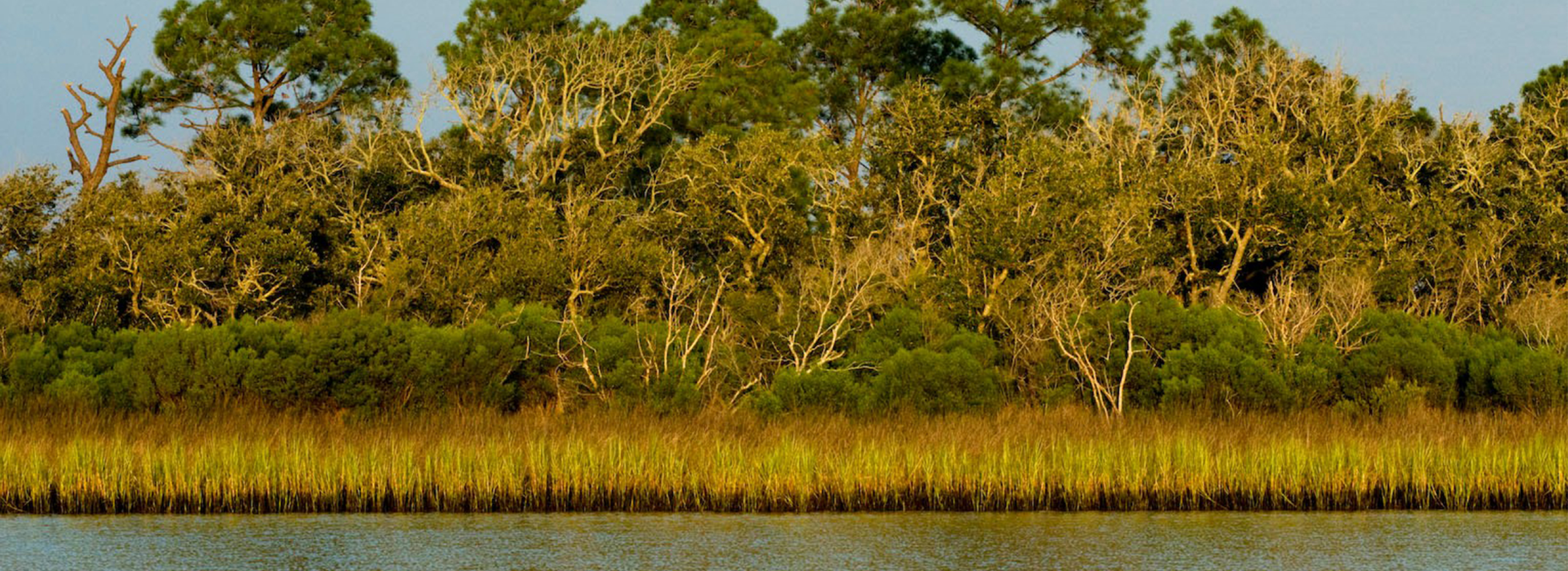
The Mobile Bay National Estuary Program (MBNEP), in partnership with Goodwyn, Mills, and Cawood, Inc. (GMC), has completed and released the Fowl River Watershed Management Plan. Visit the Fowl River Watershed page on the MBNEP website to view and download the plan and appendices.
In 2014, the MBNEP contracted with GMC to prepare a comprehensive Watershed Management Plan (WMP) for the Fowl River Watershed. The purpose of the plan is to guide watershed resource managers, policy makers, community organizations and citizens to protect the chemical, biological, and cultural integrity of the Fowl River Watershed. Specific goals are to protect and preserve the waters and habitats that support healthy populations of fish, shellfish, and wildlife and provide for recreation in and on the waters of this estuary of Mobile Bay.
Completion of a comprehensive watershed management plan involves collaborative efforts from numerous sources. A Steering Committee comprising diverse stakeholders was created to guide the planning process. The Committee, working with MBNEP, then established working groups ¾ coalitions of federal, state, and local agencies; county and local governments; business groups and commercial interests, property owners and developers; and civic and environmental groups.
Although Fowl River is overall a healthy watershed, the working groups identified nutrient loading, excessive stormwater runoff, and habitat loss as critical issues, as well as stormwater management and flood protection. Improved management of new urban development and retrofits of existing developments using stormwater best management practices are recommended; ways to combat habitat loss are also a part of the plan.
Residents of the Fowl River Watershed and other local stakeholders were also engaged in a public outreach and education effort. They identified the following priority issues: habitat management, habitat protection, litter, erosion and sedimentation, ordinances, sustainable development, citizen participation and access, shorelines, stormwater management, habitat acquisition, islands, chemical management, signage, enforcement, boat wakes, and recreation. A working group developed management measures and goals to tackle these priorities in a systematic way.
Since 2010, the MBNEP has expanded its work promoting wise stewardship of the waters, species and resources of the watersheds within the Mobile Bay drainage basin. The Fowl River Watershed is the fourth watershed within the larger Mobile Bay watershed system to be evaluated in the past five years. Preparation of the Fowl River Watershed Management Plan was made possible by collaborative funding provided by the National Fish and Wildlife Foundation through MBNEP.